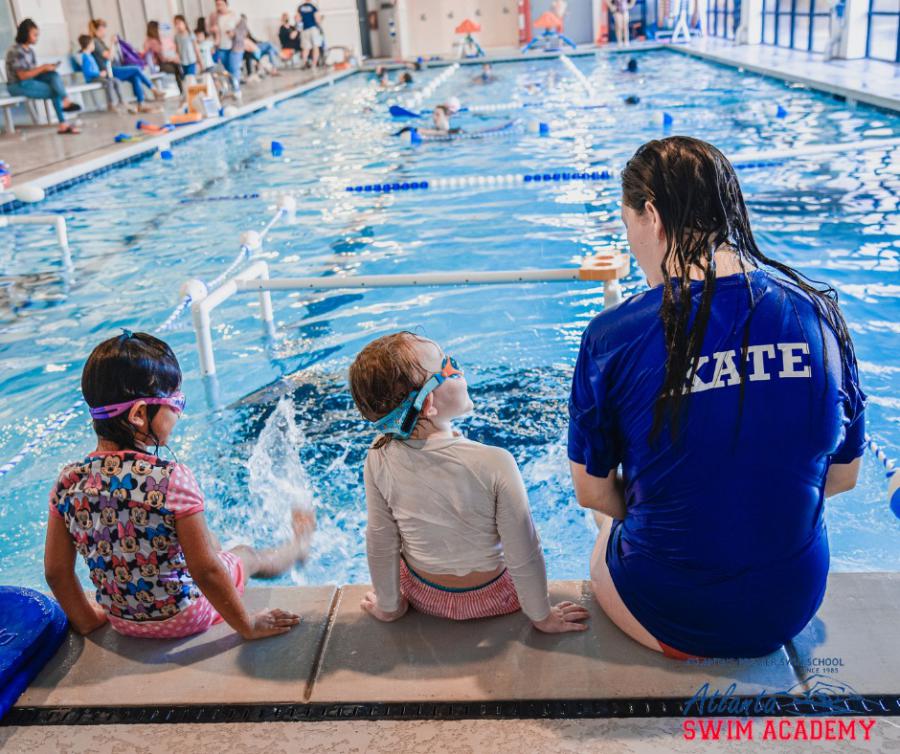
Water Safety Month: Drowning Prevention Starts with Swim Lessons
May is National Water Safety Month. Each year in the United States, there are more than 4,000 fatal drownings, which is an average of 11 deaths per day.
PHOENIX, AZ, UNITED STATES, May 16, 2025 /EINPresswire.com/ -- May is National Water Safety Month. Each year in the United States, there are more than 4,000 fatal drownings, which is an average of 11 deaths per day. There are also approximately 8,000 nonfatal drownings annually, where a person survives but may suffer long-term health effects.
According to the Centers for Disease Control, drowning is the leading cause of death for children ages 1-4 and the second leading cause of death for kids 5-14
“The most effective way to keep kids safer around water requires a layered approach,” said Lisa Zarda, U.S. Swim School Association executive director. “The ideal water safety combination is education, like swim lessons, adult supervision, like a designated “water watcher,” and physical safety measures, like pool fences.”
Research shows that children enrolled in formal swim lessons reduce their likelihood of drowning by 88%. Therefore, selecting an appropriate learn-to-swim program is crucial.
Here are key factors to consider when making this important decision:
Curriculum focus
• Water safety education: Beyond teaching swimming strokes, programs should emphasize water safety skills and awareness including things like safe entries and exits, turning to float on the back and breath control, all of which can be the difference between panic and survival in an emergency.
• Progressive skill development: The curriculum should support continuous advancement, encouraging swimming as a lifelong activity.
• Parental involvement: Parents should be allowed to observe lessons, fostering transparency and engagement.
Qualified instructors
• Qualifications: Ask questions to determine if the swim school employs experienced and qualified teachers who will give students of all ages the best opportunity to learn.
• Experience: Ensure instructors have received formal training that includes first aid, proper supervision during swim lessons, bloodborne pathogens knowledge, abuse prevention, emergency action plans, reducing fear and anxiety, child development related to teaching swimming and the importance of a positive learning environment.
Class structure
• Appropriate ratios: For young or beginner swimmers without a parent or other caregiver in the water, the instructor-to-student ratio should be no more than one adult to six students, with a best-practice ratio of one adult to four students or fewer.
• Age and skill grouping: Ask if classes are organized by age and ability to provide a tailored learning experience.
Safety measures
• Vigilant supervision: Ensure the school’s staff members are vigilant and prepared to respond in an emergency with at least one CPR/first aid certified individual in the facility during all hours of operation.
• Comprehensive safety plan: The facility should have an action plan in an emergency with staff training and health protocols reviewed regularly.
• Child protection policies: Verify that staff members undergo regular background checks and receive training on preventing and responding to child abuse.
Facility standards
• Cleanliness and maintenance: Well-maintained pools, facilities and sites contribute to a safe and healthy learning environment.
• Safety equipment: Look for the availability of appropriate safety gear, like rescue tubes or ring buoys, shepherd’s crooks or reaching poles, spine boards, automated external defibrillators, gloves and breathing masks that are easily accessible in an emergency.
Program reputation
• Community feedback: Search online and ask for reviews and testimonials from other parents to gauge program quality and effectiveness and ensure it aligns with your family’s goals.
• Resources: To find swim lessons near you, visit www.usswimschools.org.
“By carefully evaluating these aspects of your local swim school, you can select a learn-to-swim program that not only teaches your child how to swim but also instills essential water safety skills, contributing to their overall well-being and confidence in aquatic environments,” Zarda added. “Choosing the right swim program can help children of all ages develop confidence and competence in the water, ensuring they have a fun and safe swimming experience all summer.”
Charlotte Shaff
THE MEDIA PUSH
email us here
Visit us on social media:
LinkedIn
Instagram
Facebook
YouTube
X
Distribution channels: Business & Economy, Culture, Society & Lifestyle, Education, Sports, Fitness & Recreation, Travel & Tourism Industry
Legal Disclaimer:
EIN Presswire provides this news content "as is" without warranty of any kind. We do not accept any responsibility or liability for the accuracy, content, images, videos, licenses, completeness, legality, or reliability of the information contained in this article. If you have any complaints or copyright issues related to this article, kindly contact the author above.
Submit your press release


